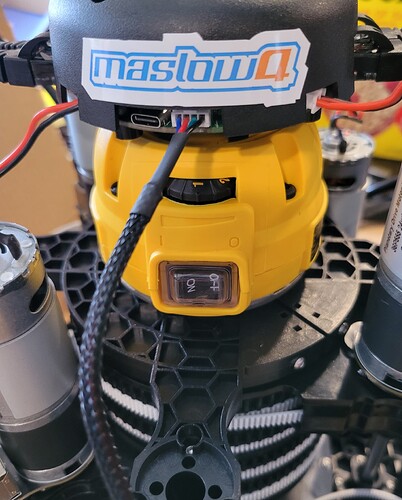The M4 hardware is finally built!
Another straight forward build. A couple steps took more time than I wanted, but probably my own fault.
The PCB mounting plate fits very well to the D611, however, I urge everyone following this to make sure to click in both sides along the striped grooves at the same time. I had one tab not quite get past the edge and I had to force it past that tiny edge to fit. That wouldn’t have been an issue if I waited to press until I was sure every tab was aligned.
I also felt silly because I figured a solution to the locking nuts not quite reaching the bolt when held flush…just put two in. The first will reach and bite, the second will just fall out, ready to be used for the next bolt. Oh the time i could have saved! 
Also, for the uprights assembly, I found fishing my allen key through the hole and catching the locknut helped guide it in without dropping. Also, as pictured below, if you hold your index finger over top the nut and use a couple other fingers to stabilize the key, its much easier and faster to fasten them together:
The pictures showing the heatsinks attached to the PCB weren’t available when I made this. I’m assuming I’ve installed them correctly as long as i used the adhesive side to attach directly to each of the 6 chips.
When fitting the fan module, the ridges that guide the PCB and cover into the mounting bracket have a slight grip but is easily slips. Putting the bolt in the cover, lining up the PCB with the mount holes underneath, and then a slight squeeze in order to connect the nut was the best method I could think of.
For placing the motors in the correct order, another zoomed out pic that shows the cord position and maybe numbered 1-4 near each motor might be easier to understand than to compare the current pic and gif.
Just to note, by the end of the step-by-step, there are still open connections on the PCB (covered and hidden), and the motors can shift fairly easily from upright to upright without any major friction. Both of these I’m assuming are to be expected but thought I’d bring it up here to either put at ease or rectify.
Total time to install: ~4-6 hrs. If youre reading and double checking every step on your first build, probably 8 hours.
Thanks for the instructions! Next step, firmware, interface, calibration, and then playing with the new toy!








